Text
hello everyone! been on hiatus for quite a while, but i’m back. although, it will not be at all like before. life is too complicated and busy for such leisurely activities. in the meantime, i’ve made myself purposeful by making yet another blog lol (sigh). if you’re interested in primitive and working dogs (think LGD, sighthounds and the random village dog), then man do i got the blog for you.. yes indeed. i also try my best to correct the misconceptions and educate on the correct breed information according to country of origin kennel clubs, prominent breeders, breed authority representatives and the fédération cynologique internationale (FCI).
anyway, here you go.
#i am a disgrace#this is a cat blog ... what am i doing-#but#my love for these dogs cannot be held secret no longer#if you hate me unfollow me right now on here#....and then follow me back on the new blog#LMAO#ok im done
25 notes
·
View notes
Text
Over 2000 euros guys!!!!! Nearly halfway there. 🤗 This will be such a big help to her, skitty cat, and her family. Let’s try to reach the full 5k, please keep sharing on any platform you possibly can. Tumblr, twitter, even facebook and Instagram would be great places and real easy to share the link there. Appreciate you all! 💛🐯
PLEASE B00ST: HELP ME SAVE MY FRIEND’S EMOTIONAL SUPPORT ANIMAL


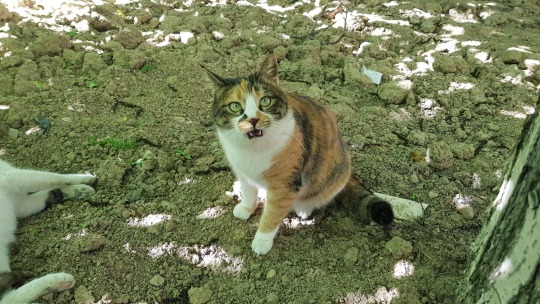

GO FUND ME LINK HERE
my friend is a brown muslim bisexual woman who’s family has hit hard economic times. Fleeing the Netherlands at one point due to extreme islamophobia, they decided to return for better access to medical mental health care. moving is expensive, being pressured to move is even more expensive. all of this compounds with the current COVID-19 pandemic, due to strict border requirements my friends cat Skitty is currently stranded in Istanbul. they are currently in need of money to both bring Skitty home AND contribute to their family’s rent and grocery expenses while they resettle. If she cannot gather the funding Skitty will have to be humanly euthanized.
We can all empathize with the lonely feelings of the pandemic. i personally can say i wouldn’t have made it through this all this far without my pets, and i’m sure some of you feel the same. Emotional Support Animal doesn’t come close to explaining how important this little cat is to her. They have spent agonizing months apart (for the both of them!) and it would mean so much to have them reunited.
https://www.gofundme.com/f/help-my-cat-skitty-return-home
all donations are appreciated and reblogging will always help more than you will ever know. thank you. here is her twitter post if you’d like to spread the word there.
1K notes
·
View notes
Text
PLEASE B00ST: HELP ME SAVE MY FRIEND’S EMOTIONAL SUPPORT ANIMAL




GO FUND ME LINK HERE
my friend is a brown muslim bisexual woman who’s family has hit hard economic times. Fleeing the Netherlands at one point due to extreme islamophobia, they decided to return for better access to medical mental health care. moving is expensive, being pressured to move is even more expensive. all of this compounds with the current COVID-19 pandemic, due to strict border requirements my friends cat Skitty is currently stranded in Istanbul. they are currently in need of money to both bring Skitty home AND contribute to their family’s rent and grocery expenses while they resettle. If she cannot gather the funding Skitty will have to be humanly euthanized.
We can all empathize with the lonely feelings of the pandemic. i personally can say i wouldn’t have made it through this all this far without my pets, and i’m sure some of you feel the same. Emotional Support Animal doesn’t come close to explaining how important this little cat is to her. They have spent agonizing months apart (for the both of them!) and it would mean so much to have them reunited.
https://www.gofundme.com/f/help-my-cat-skitty-return-home
all donations are appreciated and reblogging will always help more than you will ever know. thank you. here is her twitter post if you’d like to spread the word there.
#you guys!!!! already raised over 600 euros#y'all are doing so good#please keep sharing#everything counts#and pls donate if you can <3#tyyyyyy
1K notes
·
View notes
Text
Please help reunite my dear friend and her beloved cat, AND help her family in this incredible hardship they're facing. I’ve known Ays for probably 5 or so years. She is an incredible human being with the greatest love for animals, especially when it comes to her cats. Not only that, her family is in need of help and support. Can you please reblog, retweet, donate and share her story with your family and friends? I understand its been tough for everyone since the pandemic, but whatever you can afford will go a long way. Please lets reunite these two and support her family. Thank you <3
PLEASE B00ST: HELP ME SAVE MY FRIEND’S EMOTIONAL SUPPORT ANIMAL




GO FUND ME LINK HERE
my friend is a brown muslim bisexual woman who’s family has hit hard economic times. Fleeing the Netherlands at one point due to extreme islamophobia, they decided to return for better access to medical mental health care. moving is expensive, being pressured to move is even more expensive. all of this compounds with the current COVID-19 pandemic, due to strict border requirements my friends cat Skitty is currently stranded in Istanbul. they are currently in need of money to both bring Skitty home AND contribute to their family’s rent and grocery expenses while they resettle. If she cannot gather the funding Skitty will have to be humanly euthanized.
We can all empathize with the lonely feelings of the pandemic. i personally can say i wouldn’t have made it through this all this far without my pets, and i’m sure some of you feel the same. Emotional Support Animal doesn’t come close to explaining how important this little cat is to her. They have spent agonizing months apart (for the both of them!) and it would mean so much to have them reunited.
https://www.gofundme.com/f/help-my-cat-skitty-return-home
all donations are appreciated and reblogging will always help more than you will ever know. thank you. here is her twitter post if you’d like to spread the word there.
1K notes
·
View notes
Photo
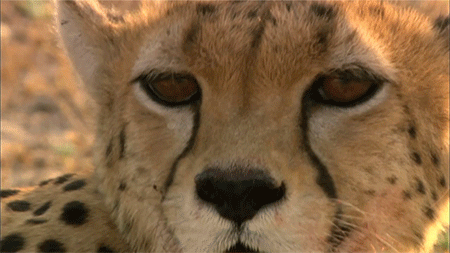
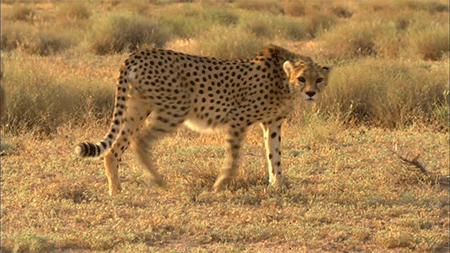

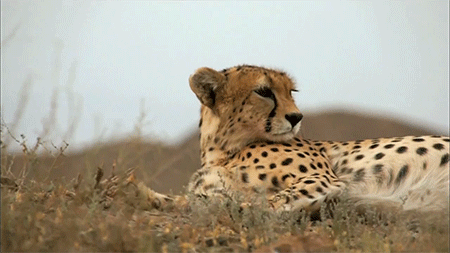
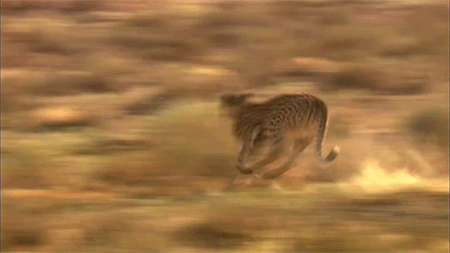
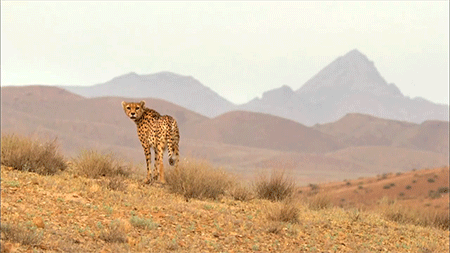
Pure Nature Specials - Wild Iran
The Asiatic cheetah once had a distribution that extended across the Middle East, Central Asia, north into southern Kazakhstan and southeast into India. Today, the cheetah has been extirpated from its entire Asiatic range, except for a small and critically endangered population in the Islamic Republic of Iran.
Estimated at 200 animals in the 1970’s, there are now thought to be only 70-110 Asiatic cheetahs left in the wild, all occupying the arid, central plateau of Iran.
Major Threats facing the Asiatic Cheetah include: - Overhunting of cheetah prey - Habitat degradation - Direct poaching
For more info, please go here | source.
444 notes
·
View notes
Photo




Leopard (Panthera pardus) Maasai Mara, Kenya.
720 notes
·
View notes
Photo

Cheetah (Acinonyx jubatus) female by Bernard DUPONT (CC Attribution 2.0 Generic)
117 notes
·
View notes
Photo








“the wonderful thing about tiggers is tiggers are wonderful things.”
the clouded leopard is the most ancient type of cat alive today, with all other living cats sharing their genetic blue print. it is from them that today’s species of cats inherited their razor sharp canines, heightened senses, extreme agility and climbing skills. but they are now so rare that little is known about them, including just how many are left in the wild.
what we do know is than that they continue to live high in tree tops like their ancient cat ancestors, using their long tails for balance. and that they, like all cats, are one of the few animals who lack a fear of heights. but unlike a typical house cat that can get stuck up in a tree, the clouded leopard can rotate its paws to climb down head first. (video)
54K notes
·
View notes
Photo

“Part of Kristen Wieners’s job is to teach Ajax and Wyatt (pictured) husbandry behaviors, such as opening their mouths, which allows for them to keep track of their health.” - Source
200 notes
·
View notes
Photo
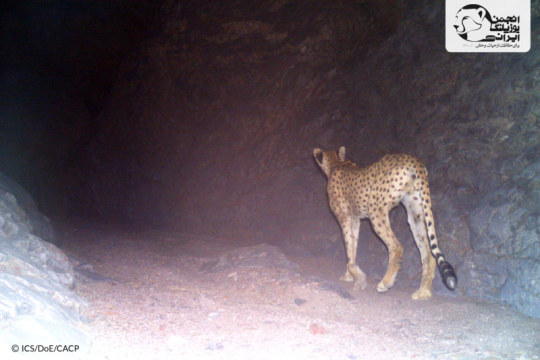

‘Arash’ and ‘Pouyan’ are still roaming in Naybandan
[article and photographs from the Iranian Cheetah Society (ICS]
During August-September 2016, the ICS researchers surveyed Naybandan Wildlife Refuge in South Khorasan Province. Out of 52 camera traps set up over the reserve, about 70% of them were placed at water points. In total, 31 cheetah photographs and 9 videos were obtained during the present survey. All the cheetah photographs were captured in Naybandan’s core zone. Analysing the cheetah photographs, the ICS researchers could identify two male cheetahs we have photographed in the reserve since 2012, known to us as ‘Arash’ and ‘Pouyan’.
[full article]
#omg my cousin’s name is arash :’)#asiatic cheetah#acinonyx jubatus venaticus#cheetah#Iran#Arash#Pouyan
428 notes
·
View notes
Photo
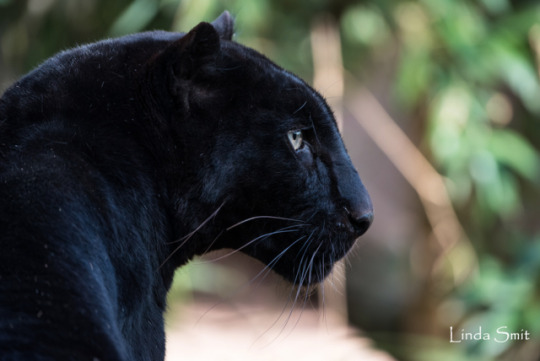
Photo by Linda Smit
232 notes
·
View notes
Photo

Photo by Sai Adikarla
138 notes
·
View notes
Photo
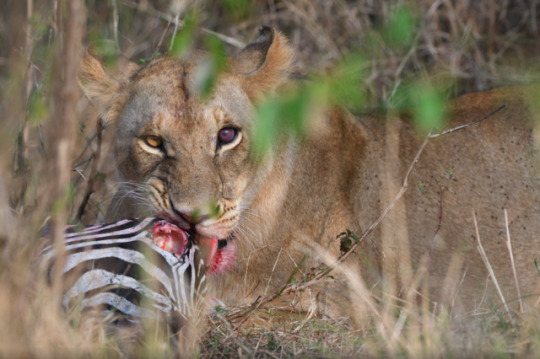
A lioness, with a bad eye, gnawing on a zebra head in the Masai Mara, Kenya.
Photo by Elmar Weiss
376 notes
·
View notes
Photo
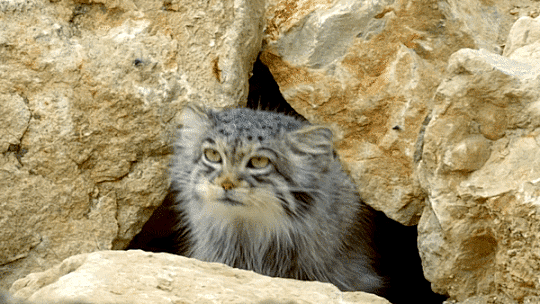
Grumpy-Faced Cat is a Mountain Survivor
833 notes
·
View notes
Text
We left off the #CrouchingTigerHiddenData writeups at a point where I promised you that it is, in fact, fairly hard to secretly move an illicit tiger cub around the United States secretly these days.
While you might have heard in a lot of the “captive big cat crisis” messaging that cubs that leave zoo settings to go into the private sector go missing and end up never being heard from again, that’s not realistic now that we’re almost 20 years into the 21st century. The prevalence of smartphones and the proliferation of the “cute exotic animal” social media frenzy means that pretty much as soon as a cute cub is photographed or filmed in any way, they’ll end up on the internet. Even if the public doesn’t hear about it immediately, the authorities absolutely keep an eye on that sort of media, and do follow up to make sure animals seen online were acquired legally. Most facilities that breed large cats and move them between facilities are part of the Captive Bred Wildlife permitting program, which means that births, deaths, and transfers are tracked in records that must be available to Fish and Wildlife upon request. Given that even PETA is willing to put in writing that there are only a few breeders in the US putting out cubs in enough volume to contribute to the overpopulation problem, it’s really not hard to figure out the origins of the few cubs that are sold illegally.
Here’s a case study: the tiger that appeared in that Logan Paul video in 2017.

Yup. This bullshit. In early December of 2018, headlines started appearing about how the October 2017 video in which Logan Paul forced his stressed out dog to meet a baby tiger had landed him in controversy… because the tiger was owned illegally… and it resulted in the tiger’s owner being arrested. After getting past the “of course that happened” reaction because ugh, Logan Paul, I decided to try to figure out where that tiger came from and where he went. Nothing published mentioned where the cat was bought from, and while news articles said it was placed with a wildlife sanctuary or large animal rescue (some specifying L.A.), there was no specific facility information released.
Cat land is small, so the next thing to do was apply some logic. The tiger in the video was young enough to have to have been sold / given away as a cub, has to be a generic (sub-species hybrid aka mutt) tiger, and had to have been sourced from out of state due to California’s ban on private big cat ownership. There are only a few places breeding lots of generic tigers in the US right now, and only certain ones would be willing to sell a cub that young to some random dude. There’s only one of them currently facing federal charges for violating federal wildlife law for selling big cats illegally across state lines, so that’s a reasonable place to start.
In addition to being on trial for repeatedly trying to take a hit out on the CEO of Big Cat Rescue, Joe Exotic (a/k/a Maldonado-Passage or Schreibvogel) has also been indicted for multiple violations of the Endangered Species Act and the Lacey Act: these include not only shooting multiple tigers at his facility, but interstate commerce without a permit and falsifying paperwork to make the sales look legal. I pulled up the the court filings to see if any of the charges matched the timeline of the video being filmed. Of the 12 specific sales documented, all had known destinations and dates that didn’t match - but other charges in the document state that that “on or about October 30, 2017, in the Western District of Oklahoma and elsewhere, [Joe] knowingly and unlawfully offered for sale in interstate commerce endangered wildlife, namely two tiger cubs (Panthera tigris).” Since the exact dates of the sale aren’t known, and the video was posted October 21st, that’s plausibly the right timeline.
A little bit of social media digging found Joe Exotic posting a bunch of screenshots of text messages and videos, indicating that the tiger was sold by his business partner / the guy who bought G.W. Exotics a few years ago, Jeff Lowe. (Unfortunately the video that was screenshotted by Joe, allegedly showing that tiger cub in the G.W. Exotics nursery, has been deleted from social media - along with a lot of content from the end of 2017.) Tigers stripes are as unique as a fingerprint, and so are incredibly useful for identifying individual animals. The cat in the Logan Paul video has very distinct “loops” on his forehead. I can’t confirm that the tiger cub in the screenshots / video Joe posted is the same as the one in the Logan Paul video, because while the loops look the same, there’s discrepancies in some of the other markings (like the loop on the top of the head). I found video on the G.W. Exotics Facebook page with another cub that is definitely not the Logan Paul cub with similar forehead loops, so it might be possible that there was a litter of tiger cubs with similar markings.



(Top: Media screenshot of the tiger. Bottom: Photos posted by Joe Exotic allegedly of the same tiger and a screenshot from the video he posted.)
Either way, we know that a search warrant was served on Jeff Lowe’s Las Vegas property in November 2017, where he had been keeping sickly cubs that he was using for pay to play interactions without property permits. Joe Exotic alleges in some of his posts that the cubs Jeff Lowe was using for those interactions came from G.W., and the cub(s) visible in the documentation Joe posted appear to be at least related to, if not actually the same, tiger in the Logan Paul video. While we can’t know who facilitated the cub changing hands, it seems highly probable that the tiger cub in the video was born at G.W. Exotics in the late summer of 2017.
So where did that cub go? Somewhere in the L.A. area and to some sort of rescue facility, according to media reports. This part wasn’t as hard to track down: in January, the Exotic Animal Training and Management program at Moorpark Community college took in a young male tiger cub. They’re recieved the call in December that a four-month-old tiger had been confiscated from a “private home” somewhere in California where he’d been kept illegally. Moorpark kept Neil’s origin under wraps because there was an ongoing criminal case, but as soon as photos of him were put online, the big cat community figured out he was the same cat as in the video due to his distinctive forehead loop markings.

(Photo Credit: America’s Teaching Zoo)
It turns out that the Logan Paul video allowed authorities to find Neil, but it wasn’t the first time they knew he was illegally in private hands: a recent news article noted that “In October 2017, wildlife trafficking wardens with the state received an anonymous tip that the tiger was seen in pictures of models that were posted to Instagram.” Once the media announced the criminal case in December, the general public figured out Neil’s origin pretty quickly; it was recently publicly confirmed by a post on the L.A. City Attorney’s Office’s Instagram.

What does this all tell us? It tells us that even before Logan Paul did idiotic things involving animals and made Neil’s existence very public, wildlife officials knew there was a cub being illegally owned in that part of California; it tells us that wildlife officials are actively tracking people who are using cubs commercially and actively enforcing the relevant regulations; it tells us that when animals are used / bought / sold illegally, it rarely stays secret in the big cat community; and it tells us that thanks to the internet and social media, it’s often feasible to trace the origin of a big cat even when very little information has officially been released.
As a bonus example: shortly after Neil’s arrival at Moorpark, the college acquired a young female cub as a social companion for him, named Karma. Neil had likely had very little interactions with other tigers in his young life before being confiscated, and it was really important that he have a companion and get to engage in species-specific behaviors.

(Photo Credit: America’s Teaching Zoo)
While very little information has been publicly released by the organization about Karma’s origins, it’s still pretty simple to figure out where she came from. On January 29th, Moorpark posted about Karma’s arrival on Facebook, saying “a female Bengal tiger arrived a few days ago from a licensed facility to enhance the life of Neil.” That tells us that Karma was transferred from another USDA-licensed facility, not rescued, and that the facility she came from breeds Bengal / generic tigers. That means they’re not an AZA-accredited facility, since generic tigers in that system are being managed to extinction (i.e., not bred and let die off as a population). This information narrows down the options for her origin pretty drastically, because we’re looking for a facility that is breeds generic tigers frequently enough to have a cub the right age to be a companion for Neil. There aren’t very many of those left in the United States - a fact PETA is so sure of they’re willing to put it in writing in court documents. An article from February of 2018 mentions off-hand that Karma “was a gift from a wildlife park in South Carolina,” a fact which Moorpark confirms in a video about the tigers from October 2018. The only facility in South Carolina that regularly breeds generic tigers: Myrtle Beach Safari. As MBS and Moorpark are both USDA-licensed facilities, they’re exempt from the Captive Wildlife Safety Act prohibitions against moving big cats across state lines - but because Moorpark is not part of the Captive Bred Wildlife permitting program (they don’t do conservation breeding), they still couldn’t legally buy a tiger across state lines due to the Endangered Species Act. That’s why they emphasize that Karma’s arrival at Moorpark was a donation - because legally, the only way the facility could acquire another tiger as a companion for Neil was to be gifted one.

(Photo Credit: Janeene Ward Nagaoka)
When big cats move in the United States, it’s rarely ever kept a secret. It’s incredibly unlikely that thousands of tigers could exist off the radar in country given how much social capital photos of them provide online. Allegedly these backyard cats stay completely hidden until they die, but then, the common narrative goes, the bodies of all the hidden tigers probably end up being sold in the black market. Is that really true? Shouldn’t we know if such a lucrative trade was occurring in the US, especially if there’s supposedly thousands of tigers fueling it? That’s the topic for the next post.
Want to learn more about big cats in the United States? Check out the whole series, tagged as “CrouchingTigerHiddenData”.
875 notes
·
View notes
Photo

A lioness, with a bad eye, gnawing on a zebra head in the Masai Mara, Kenya.
Photo by Elmar Weiss
376 notes
·
View notes

